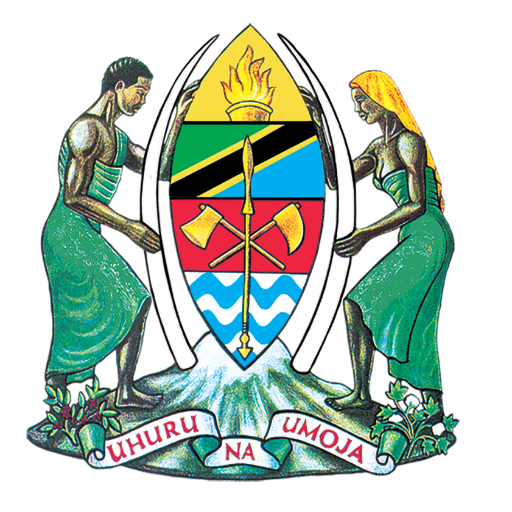Nyenzo za Udhibiti
Nyenzo za Udhibiti
Kifungu cha 40 cha Sheria ya EWURA (the EWURA Act, Cap. 414) Sura ya 414 na kifungu cha 45 cha Sheria ya Umeme Sura ya 131, (the Electricity Act, Cap. 131) vinaipa Mamlaka uwezo wa kutunga kanuni, utaratibu, miongozo, na maagizo kuhusu masuala yote muhimu ya udhibiti wa sekta ya umeme.
Tangu kuanzishwa kwake, EWURA imetunga nyenzo mbalimbali zinazotumika kudhibiti sekta ndogo ya umeme. Nyenzo hizo ni sera, Sheria na Kanuni zilizotungwa na Waziri mwenye dhamana ya sekta ya umeme pamoja na viwango vilivyoidhinishwa na Shirika la Viwango Tanzania (TBS)
Sera, Sheria na Kanuni
- Ripoti ya Udhibiti Sekta ya Umeme Afrika, 2022
Electricity Regulatory Index for Africa, 2022
- Sera ya Taifa ya Nishati, 2015
The National Energy Policy, 2015
- Sheria ya Umeme (Marekebisho Na. 3, 2020)
The Electricity Act (Amendment No 3 of 2020)
- Sheria ya Umeme (Marekebisho Na. 6, 2019)
The Electricity Act (Amendment No 3 of 2020)
- Sheria ya EWURA Sura Na. 414
The EWURA Act (Amendments No.6 of 2019)
- Sheria ya Umeme Sura Na. 131
- Sheria ya Viwanda vya Uziduaji (Uwazi na Uwajibikaji), 2015
The Tanzania Extractive Industries (Transparency and Accountability) Act, 2015
- Kanuni ya Ridhaa ya Makosa, 2020 Notisi ya Serikali Na. 397
The EWURA (Compounding of Offences) Regulations 2020-SUPP GN. 397
- Kanuni ya Umeme (Mageuzi ya Masoko na Ukuzaji wa Ushindani, 2016
The Electricity (Market Re-Organization and Promotion of Competition) Regulations, 2016
- Kanuni za Umeme (Jumla), 2020 Notisi ya Serikali Na. 945
- The Electricity (General) Regulations,2020 GN. 945
Kanuni
Ifuatayo ni orodha ya kanuni mbalimbali zilizotungwa na EWURA ili kusimamia utendaji kazi wa sekta ndogo ya umeme:-
- Kanuni za Shughuli za Uzalishaji Upelekaji na Usambazaji Umeme 2024-GN 679
- Kanuni za Utatuzi wa Malalamiko ya Watumiaji 2020, Notisi ya Serikali Na. 428
- Kanuni za Uanzishaji na Utekelezaji wa Miradi Midogo ya Umeme 2020, Notisi ya Serikali Na. 491
- Kanuni ya Ununuzi wa Miradi ya Umeme na Uidhinishwaji wa Mikataba ya Mauziano ya Umeme, 2019 Notisi ya Serikali Na. 453
- Kanuni ya Huduma ya Ugavi wa Umeme 2019, Notisi ya Serikali Na. 387
- The Electricity (Net-Metering) Rules, 2018, Notisi ya Serikali Na. 76 net-metering” means measuring the difference between an imported and exported energy in kilowatt hours (kWh) over the applicable billing period and the term “net energy metering” shall be construed accordingly;
- Kanuni ya Maombi ya Tozo na Upangaji Bei ya Mwaka 2017, Notisi ya Serikali Na. 452
- The Electricity (Grid and Distribution Codes) Rules, 2017, GN 451
- The Electricity System Operations Services Rules, 2016, GN 324
- The Electricity Market Operations Services Rules, 2016, GN 325
- The Electricity (Grid & Distribution Codes) Rules, 2017
- EWURA (Tariff Application and Rate Setting) Rules, 2017, GN 452.
Agizo la bei
- Agizo la bei kwa TANESCO Na. 2016-010
- Agizo la bei kwa Mwenga
- Agizo la bei kwa Andoya
- Agizo la bei kwa miradi midogo midogo ya umeme la mwaka 2019, GN 464
- Agizo la marekebisho ya bei kwa TANESCO, GN 1020
Utilities’ Customer Service Charters.
- TANESCO Customer Service Charter
- Andoya Customer Service Charter
- Mwenga Customer Service Charter
Manuals
- TANESCO Engineering Instruction Manual
- EWURA Inspection and Audit Manual
- MWENGA Engineering Instruction
- Manual
- ANDOYA Engineering Instruction Manual
Standards
- TZS 1373:2011 – Power Quality – Quality of supply;
- TZS 1374:2011 – Power Quality – Quality of service and reliability;
- TZS 1375:2011 – Electromagnetic Compatibility (EMC) – Limits for voltage change, voltage fluctuation and flickers in public low voltage supply system for equipment with rated current ≤ 16A per phase and not subject to conditional connection;
- TZS 1376:2011 – Electromagnetic Compatibility (EMC) – Limits for voltage change, voltage fluctuation and flickers in public low voltage supply system for equipment with rated current ≤ 75A per phase and subject to conditional connection;
- TZS 1377:2011 Electromagnetic compatibility (EMC) – Limits for harmonic current emissions for equipment with input current ≤ 16 A per phase;
- TZS 1378:2011 Electromagnetic compatibility (EMC) – Limits for harmonic current emissions for equipment with input current > 16 A per phase;
- TZS 1379:2011 Electromagnetic compatibility (EMC) – Compatibility levels for low-frequency conducted disturbances and signalling in public low-voltage power supply systems;
- TZS 1380:2011 Electromagnetic compatibility (EMC) – Compatibility
- levels for low frequency conducted disturbances and signalling in public medium voltage power supply systems;
- TZS 1381:2011 Electromagnetic compatibility (EMC) – Compatibility levels in industrial plant for low-frequency conducted disturbances; and
- TZS1382:2011 Electromagnetic compatibility (EMC) – Power quality measurement methods.
Guidelines & Publications


